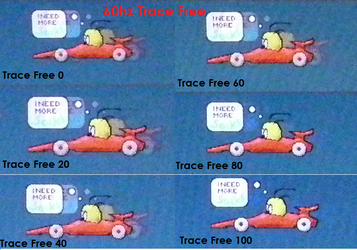- Joined
- Dec 13, 2004
I have a Radeon HD 6950, and my current monitor isn't really the best suited for gaming. It has a maximum resolution of 1680x1050. I got it on the cheap a while back, and it occurs to me that I can replace it now with something better. But the many options confuse the hell out of me. First of all, we have this from the AMD site:
Awesome, now I have four different interfaces to choose from. Then there's the fact that I really don't know if I should be getting an HDTV or an LCD, or what a LFD really is (all I could find is marketing jargon, and another thread on this forum asking what it was with no definite answer). This one looks nice, but it seems to not have that much of a resolution boost:
http://www.newegg.com/Product/Product.aspx?Item=N82E16824236302
For comparison, here are my current monitor specs:
Size: 22-inch wide
Response Time: 5ms
Signal connector: D-Sub
Brightness: 330nits
Viewing Angle (H / V): 170/160
Contrast: 4000:1 Dynamic Contrast
Pixel Pitch: 0.282mm
Resolution: 1680 * 1050
Dimensions: 513x422x206mm
Operating voltage: 100-240VAC, 50/60Hz
Vertical Frequency: 56Hz ~ 76Hz
Horizontal Frequency: 30kHz ~ 82kHz
Power consumption: 53W (max)
I won't bother providing a link since it's in Chinese (the brand is Chimei, if that makes a difference).
So, thoughts on the monitor I linked? Is there something better I should be looking at?
Cutting-edge integrated display support
DisplayPort 1.2
Max resolution: 2560x1600 per display
Multi-Stream Transport
21.6 Gbps bandwidth
High bit-rate audio
HDMI® (With 3D, Deep Color and x.v.Color™)
Max resolution: 1920x1200
Dual-link DVI with HDCP
Max resolution: 2560x1600
VGA
Max resolution: 2048x1536
Awesome, now I have four different interfaces to choose from. Then there's the fact that I really don't know if I should be getting an HDTV or an LCD, or what a LFD really is (all I could find is marketing jargon, and another thread on this forum asking what it was with no definite answer). This one looks nice, but it seems to not have that much of a resolution boost:
http://www.newegg.com/Product/Product.aspx?Item=N82E16824236302
For comparison, here are my current monitor specs:
Size: 22-inch wide
Response Time: 5ms
Signal connector: D-Sub
Brightness: 330nits
Viewing Angle (H / V): 170/160
Contrast: 4000:1 Dynamic Contrast
Pixel Pitch: 0.282mm
Resolution: 1680 * 1050
Dimensions: 513x422x206mm
Operating voltage: 100-240VAC, 50/60Hz
Vertical Frequency: 56Hz ~ 76Hz
Horizontal Frequency: 30kHz ~ 82kHz
Power consumption: 53W (max)
I won't bother providing a link since it's in Chinese (the brand is Chimei, if that makes a difference).
So, thoughts on the monitor I linked? Is there something better I should be looking at?


